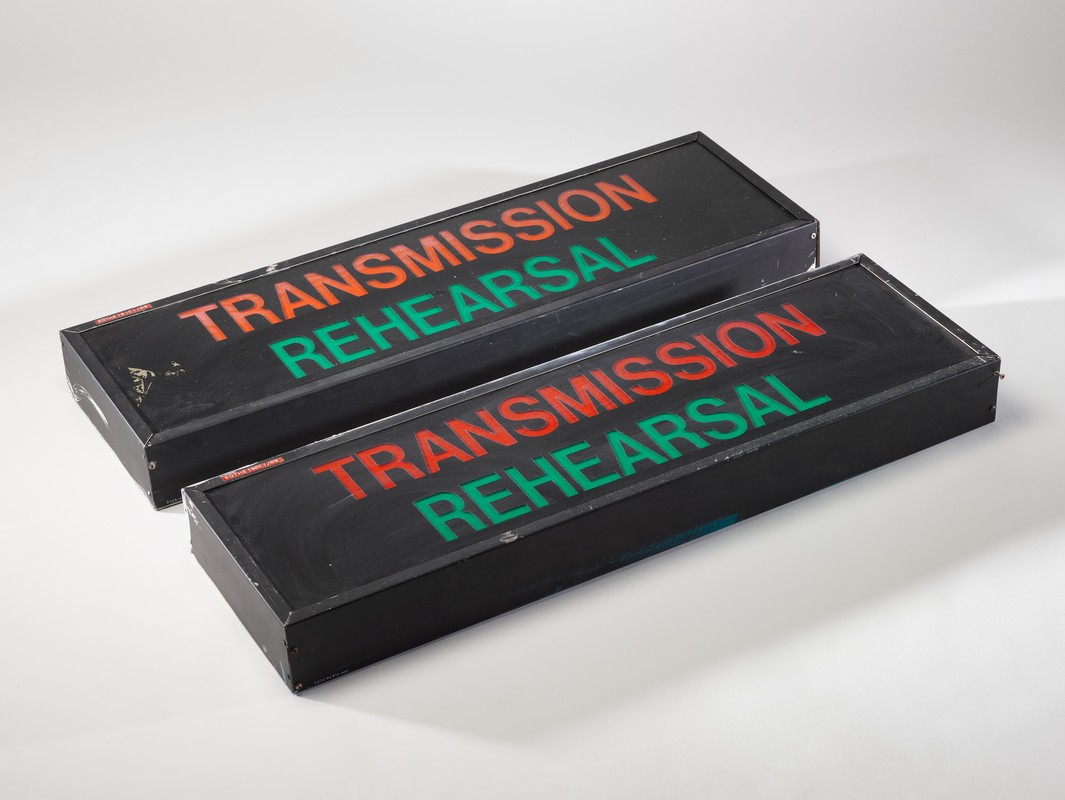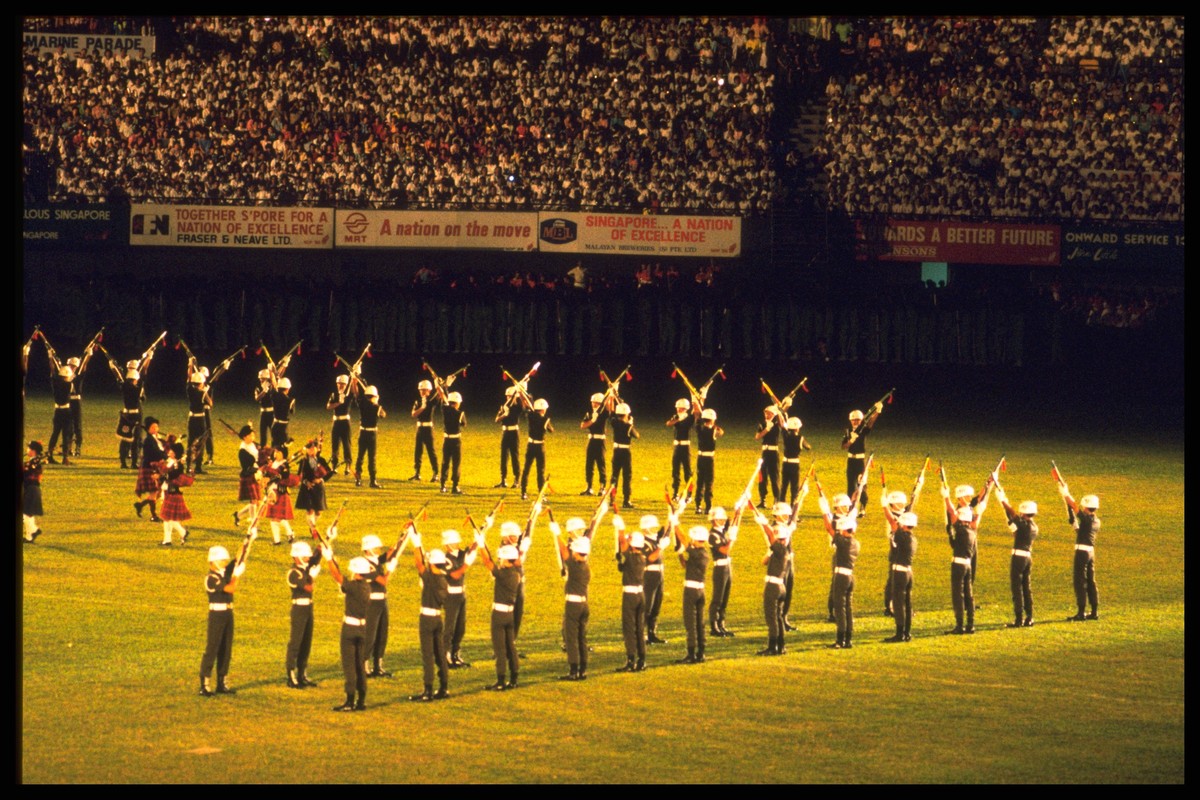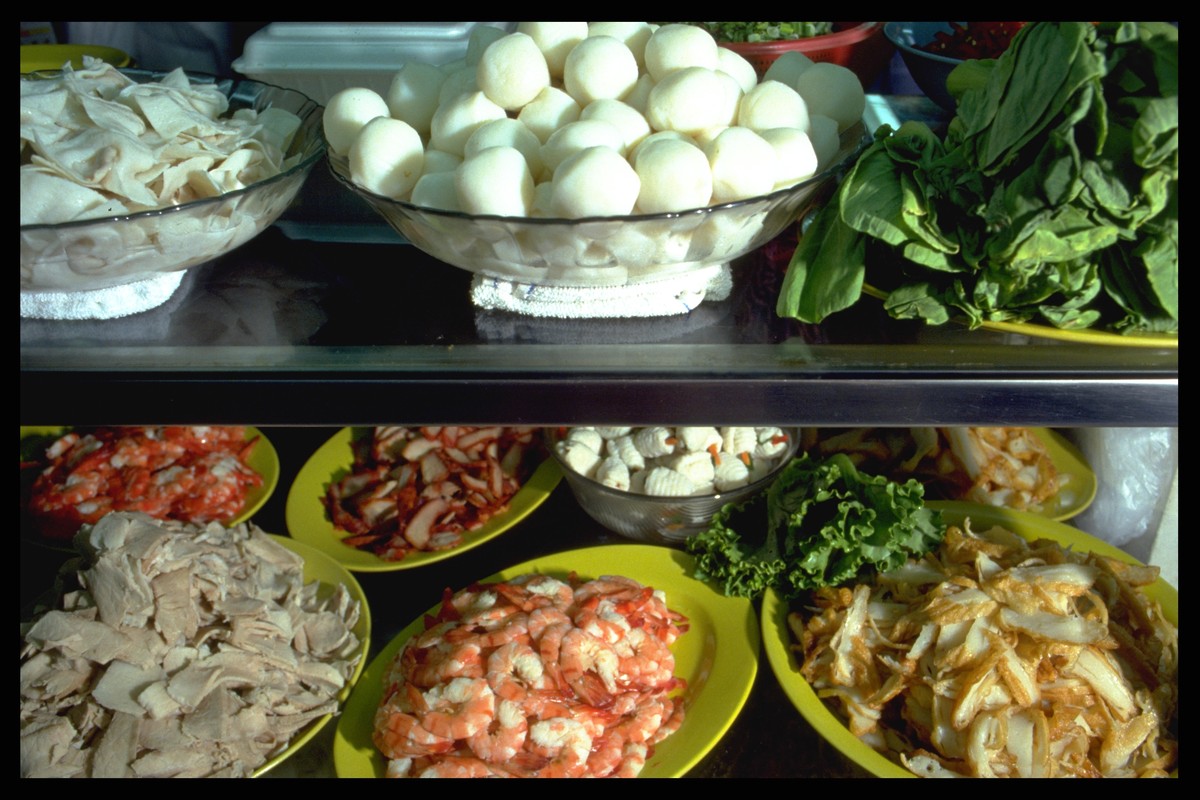Min Pao, Shin Min Daily News, and Lianhe Wanbao: Singapore’s major Chinese evening newspapers
Singapore’s Chinese evening papers, also known as tabloids, generally refer to newspapers that are compact in size and content. They are either not published daily, or are printed later in the day, usually in the afternoon or evening. Some might be published every two or three days, or even weekly.
These newspapers differ significantly from morning dailies in terms of readership and content. They target the general public with articles that are entertaining and easy to read. This would often include news on entertainment, bread-and-butter issues, strange happenings, crime and court, accidents, and calamities. Being smaller in size, they typically focus on short articles and commentaries that catch readers’ attention.
Before the advent of mobile phones and digital media, evening papers enjoyed wide popularity in Singapore. They were quick to publish winning 4-D lottery numbers and horse-racing results, and often featured expert analyses on horse races — which was why these tabloids were also commonly called maa biu bou (“lottery newspaper” in Cantonese).
In the 1950s, tabloids were discontinued in Singapore, and the island did not see another evening paper until Min Pao was published in the 1960s. The two most notable ones that followed were Shin Min Daily News and Lianhe Wanbao.

Min Pao (1960–1984)
Min Pao, the first tabloid to be launched after the People’s Action Party (PAP) came into power, was published on 19 March 1960. It was founded by Lai Kok Wah (1916–2017), Ong Chu Meng, Huang Quanhe (c. 1908–1970), and Huang Kemei (1915–1961). Lai was president, while Huang Kemei served as editor-in-chief. When it was launched, the paper only consisted of a single page and was delivered every three days. A half or full page was later added after the paper gained popularity and came to be issued every other day.
Min Pao was published by Singapore Publishing Co. Ltd., a company that was established shortly after the PAP came to power in 1959. Its editorial office was in 158 Cecil Street, the former site of Sin Pao, the newspaper founded by Fu Wu Mun (1892–1965).
Huang Kemei, the editor-in-chief of Min Pao, was a talented Teochew man and had previously been the editor of both Sin Pao and Petir Weekly. He joined Min Pao in 1960 as its chief editor, but died the following year. The position remained vacant for a long time until Tay Bon Hoi took over in May 1964. Even though Min Pao then only published every two days, its content was similar to that of a major daily paper. Its editorials declared that it “spoke from the nation’s standpoint and took the nation’s interests to be its own”. The paper’s supplements, Wen Yi (Arts and Literature) and Min Feng (Folkways), mainly featured literary and other general works. To attract more readers, it also published serialised novels such as Jin Yong’s The Return of the Condor Heroes and Liang Yusheng’s Sanhua Nüxia.
As sales continued to climb, Lai Kok Wah decided to publish Min Pao daily. After much preparation, the paper transited to a daily newspaper on 19 March 1966 — its sixth anniversary. A printing press in Kuala Lumpur was also set up to print Min Pao for daily distribution.
In 1971, Min Pao acquired a rotary printing press to cope with its growth in business. On 27 December 1979, publication was suspended by the Ministry of Culture for publishing articles that sensationalised sex. After submitting a proposal to the ministry outlining how it planned to reform its content, the paper was allowed to resume distribution on 9 January 1980. Min Pao continued to be published until 5 August 1984, when it ceased operations due to poor management. By then, the newspaper had been in circulation for a total of 24 years between 1960 and 1984.
Shin Min Daily News (1967–present)
Shin Min Daily News (or simply known as Shin Min) was founded on 18 March 1967 as a joint venture between Jin Yong (Louis Cha Leung-yung, 1924–2018), who wrote Chinese martial arts novels and was the president of Hong Kong’s Ming Pao; and Leung Yun Chee (1897–1971), the Singapore merchant whose company produced Axe Brand medicated oil. They each held a 50% stake in the newspaper, with Jin Yong helming the editorial board.
The newspaper’s office was in 7 Davidson Road. This was the site that New Life Daily News (1961–1966), also founded by Leung Yun Chee, had rented from a dairy factory after it relocated from Johor Baru to Singapore in 1962. Leung was very experienced in running newspapers: he had run Kuai Huo Bao between 1953 and September 1955, followed by Gong Shang Bao in June 1956. Both of those papers were published every three days.
At the time of its founding, Shin Min’s board of directors was chaired by Leung Yun Chee, while Jin Yong was president. The editor-in-chief was Poon Kit Foo (birth and death years unknown), the director of finance was Leong Heng Keng (1929–2018), and the general manager was Lu Shangxing (c. 1910s–1972). Jin Yong had also brought two staff with him from Hong Kong: Poon Yuet-sang, the former chief editor of Ming Pao, who took charge of the editorial department as executive editor-in-chief; and Zhu Zhiqing, who served as the paper’s manager.
The inaugural issue of Shin Min consisted of six broadsheets. More than 10,000 copies were printed and distributed for free to newspaper vendors who then sold them to readers. The papers were sold out in just a few hours. In a congratulatory message on the front page, Othman Wok (1924–2017), Singapore’s then-Minister for Social Affairs, said: “One of the essential conditions for the operation of a democratic society like Singapore is that the public must have access to correct information. Our republic is by nature multiracial, multilingual, and multicultural; there is ample room for more newspapers, periodicals, and other publications that are able to convey various news and opinions among our people.”1 He also noted that all newspapers must uphold national interests and help their readers understand the country’s issues and problems.
Jin Yong had said in an interview that Shin Min was a privately-owned commercial newspaper with no political background or party affiliations. It took an independent stance, and had national interests in mind as its reporting fostered understanding and cooperation among the various ethnic groups in Singapore. And since it was a newspaper’s duty to promote culture, enlighten the general public, instil civic knowledge, encourage freedom and democracy, and advocate social welfare, it was only natural that Shin Min would adhere to these principles.
As his martial arts novels were highly sought after by readers in Singapore and Malaysia at the time, Jin Yong also wrote The Smiling, Proud Wanderer for Shin Min’s exclusive serialisation in its launch to attract readers. This proved to be immensely popular and came to be one of the newspaper’s selling points. As outlined by Jin Yong himself, the five distinguishing characteristics of Shin Min were: a supplement that featured many famous writers and included Jin Yong’s novels not seen elsewhere, an entertainment section filled with exclusive news, an extensive global network, rich coverage of world affairs, and horse-racing analyses by well-known experts. The newspaper was initially published both in the morning and afternoon, but in the 1990s it gradually transitioned into an evening paper delivered late in the afternoon.
In the middle of 1968, Poon Yuet-sang returned to Hong Kong, and it was not until 1 April 1969 that Chung Wen Ling (birth and death years unknown) took over as editor-in-chief. The latter also brought with him Chua Hong Seng (1921–2001) and Wong Tuck Wing, both of whom had previously worked with him at Nanyang Siang Pau before the three of them went into television; as well as writer Yao Zi (Zheng Mengzhou, 1920–1982). Chua Hong Seng served as Shin Min’s editorial director, Wong Tuck Wing as news editor, and Yao Zi edited the supplement Xin Feng (New Winds). The style of the newspaper began to shift as its tone became more serious.
In September 1971, Shin Min co-founder Leung Yun Chee died. Leong Heng Keng, the director of finance, took over as chairman of the board of directors. On 9 November 1972, Shin Min relocated from Davidson Road to Yun Chee Building in 577 MacPherson Road. The team moved again on 5 February 1989 to Singapore Press Holdings’ News Centre, where it shared darkroom facilities and a resource library with Lianhe Zaobao and Lianhe Wanbao.2
In 1975, the Newspaper and Printing Presses Act was implemented, and Shin Min underwent restructuring and distribution of management equity in 1977. Chung Wen Ling left the newspaper to become editor-in-chief of Nanyang Siang Pau in February 1978. Chua Hong Seng then served as acting editor-in-chief for six months before Wong Tuck Wing was promoted to editor-in-chief, with Teh Kuan San as deputy editor-in-chief. During this period, Shin Min’s tone grew less serious and became prone to sensationalising light-hearted news, leading to its suspension by the Ministry of Culture on 7 December 1979. In an appeal, the newspaper submitted a proposal to revise its editorial policies and was allowed to resume publication on 9 January 1980.
Beginning in 1979, Shin Min gradually adopted simplified Chinese characters, starting with its supplements before moving on to the news sections and eventually becoming fully printed in simplified Chinese. In the same year, the newspaper also switched to a horizontal text layout in a bid to keep up with developing trends in the industry. Vertical formatting was now a thing of the past.3
In August 1982, the Straits Times Press (1975) Ltd bought 45% of Shin Min’s shares for about $1.12 million. An additional 14% was acquired in December that same year, making the newspaper a subsidiary of Straits Times Press. As a result, the company became one of two major publishing houses in Singapore — the other being Singapore News and Publications Limited, the holding company of Sin Chew Jit Poh and Nanyang Siang Pau.4
On 1 January 1983, The Straits Times appointed three representatives — Denis Tay, Cheong Yip Seng, and Pang Loo Kien — to join the board of Shin Min. Frank Wong (1929–2024), the former managing director and editor-in-chief of Sin Chew Jit Poh, was assigned at the same time as Shin Min’s editorial advisor. In the middle of the year, Leslie Fong Yin Leong, a senior deputy editor-in-chief of The Straits Times who had returned from his studies in London, was selected as chairman of Shin Min’s editorial committee. On 2 January 1984, Goh Nguen Wah, editor of The Straits Times’s bilingual edition, was transferred to Shin Min as a senior editor. Placed in charge of the commentary pages, he established a new Opinion section which further enhanced the newspaper’s image.
Goh Nguen Wah took over as editor in 1986 and later became the deputy editor of Lianhe Zaobao in 1990. Seng Han Thong replaced him as Shin Min’s editor and was succeeded by Toh Lam Huat a year and a half later. The latter went on to become supervising editor in 2007, when Koh Lin Hoe took on the role of editor from 2007 to 2011. The next successor was Pan Cheng Lui, editor from 2011 to 2017, followed by Choo Chee Wee who took on the role from 2017.
Lianhe Wanbao (1983–2021)
On 16 March 1983, Sin Chew Jit Poh and Nanyang Siang Pau, the two major Chinese newspapers in Singapore, merged to form Nanyang Sinchew Lianhe Zaobao (Lianhe Zaobao) and Nanyang Sinchew Lianhe Wanbao (Lianhe Wanbao).

Although both newspapers were launched on the same day, Lianhe Zaobao traces its history back to 1923 as it belonged to the category of morning dailies along with Nanyang Siang Pau and Sin Chew Jit Poh. Being an evening paper, Lianhe Wanbao did not follow suit and instead adopted 16 March 1983 as its founding date.5
The inaugural issue of Lianhe Wanbao had a letter to readers on the cover page which mentioned that the newspaper’s mission was to spread modern knowledge and promote traditional culture. It promised to report on domestic and international news in simple and concise language, ensuring that readers would be promptly and accurately informed of world affairs. A series of in-depth stories Datexie became a notable feature of the paper. It was published five days a week and took up a full page each time, with many of its reports later compiled into books over the years.
In 2011, Lianhe Wanbao expanded online by creating a Facebook page, amassing over 210,000 followers by 2018. To mark its 30th anniversary, the newspaper launched an official website and mobile app on 9 September 2013. This allowed readers to access its content anytime via smartphones, tablets, and web browsers.
At the end of 2017, the Chinese Media Group (CMG) under Singapore Press Holdings consolidated the resources of Lianhe Zaobao, Lianhe Wanbao, and CMG Digital to set up a single NewsHub serving all three platforms. This shared mode of operation came to an end only after the closure of Lianhe Wanbao in 2021.
Faced with the impact of the digital age and the limited pool of talent for local Chinese media, the 38-year-old Lianhe Wanbao was discontinued on 24 December 2021, after merging with Shin Min Daily News.
Lianhe Wanbao had a total of six editors over its 38 years, namely Chen Cheng from 1983 to 1998, Koh Lin Hoe from 1998 to 2007, Peter Ong from 2007 to 2009, Chua Chim Kang from 2009 to 2014, Lee Huay Leng from 2014 to 2016, Chua Chim Kang from December 2016 to November 2017, and Goh Sin Teck from December 2017 to December 2021.
This is an edited and translated version of 新加坡主要的华文晚间报章:《民报》《新明日报》《联合晚报》. Click here to read original piece.
| 1 | “Zhuci” [Congratulatory message], Shin Min Daily News, 18 March 1967, 1. |
| 2 | “Xinming ribao mingnian banjia eryue qianru baoye zhongxin” [Shin Min Daily News relocating to News Centre next February], Lianhe Zaobao, 3 December 1988, 6. |
| 3 | Wong Chin Soon, “Xinming ribao ershiwu nian chuang xintiandi” [Shin Min Daily News celebrates 25 years of innovation], Lianhe Zaobao, 13 June 1992, 97. |
| 4 | “Haixia shibao yi jueding shougou xinming ribao” [The Straits Times decides to acquire Shin Min Daily News], Sin Chew Jit Poh, 8 August 1982, 6. |
| 5 | Goh Sin Teck, “Wanbao ‘liang tiao tui’ pao de geng kuai geng yuan” [Wanbao races ahead with ‘two legs’], Lianhe wanbao feiyue 35 zhounian tekan [Lianhe Wanbao 35th anniversary special], 2018. |
Choi, Kwai Keong. Xinjiapo huawen baokan yu baoren [Singapore Chinese newspapers and journalists]. Singapore: Haitian wenhua qiye, 1993. | |
Ng, Kim Eng. Xinmin ribao chuangkan zayi [Musings of Shin Min Daily News’ inaugural issue]. Author’s manuscript, 1999. | |
Tay, Bon Hoi. Xinjiapo huawen baoye shi: 1881–1972 [History of Chinese newspapers in Singapore: 1881–1972]. Singapore: Xinma chuban yinshua gongsi, 1973. | |
Tay, Bon Hoi. Baolin waishi: xinjiapo de xiaobao [Tabloid newspapers in Singapore]. Singapore: Blue Spot Publishing, 2024. | |
Wang, Bifang and Han, Jiayi, eds. Lianhe Wanbao feiyue 35 zhoukan teji [Special feature of Lianhe Wanbao’s 35th anniversary]. Singapore: Lianhe Wanbao, 2015. |










